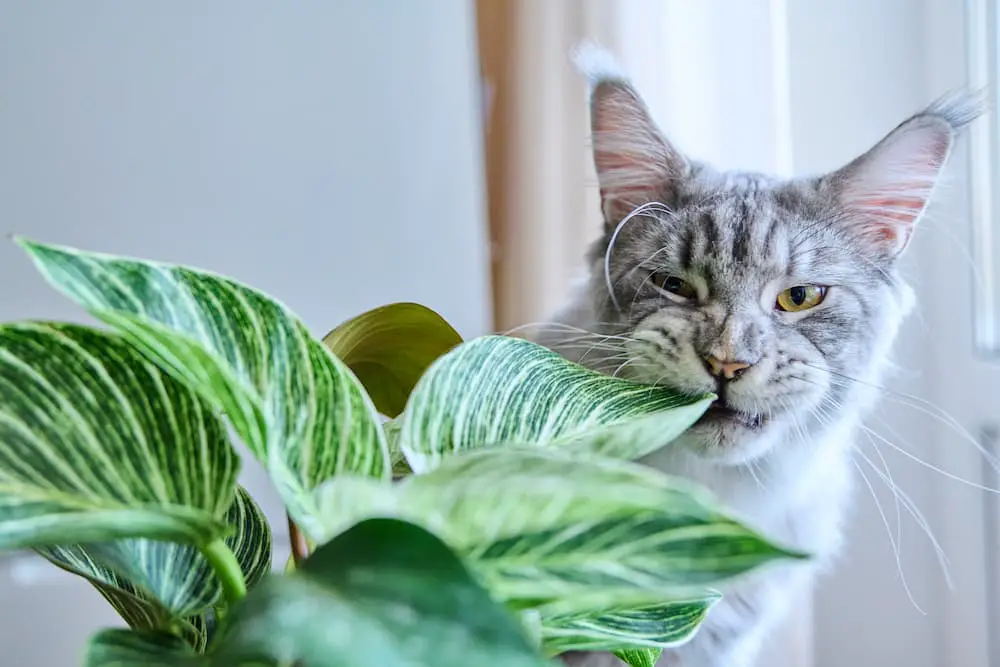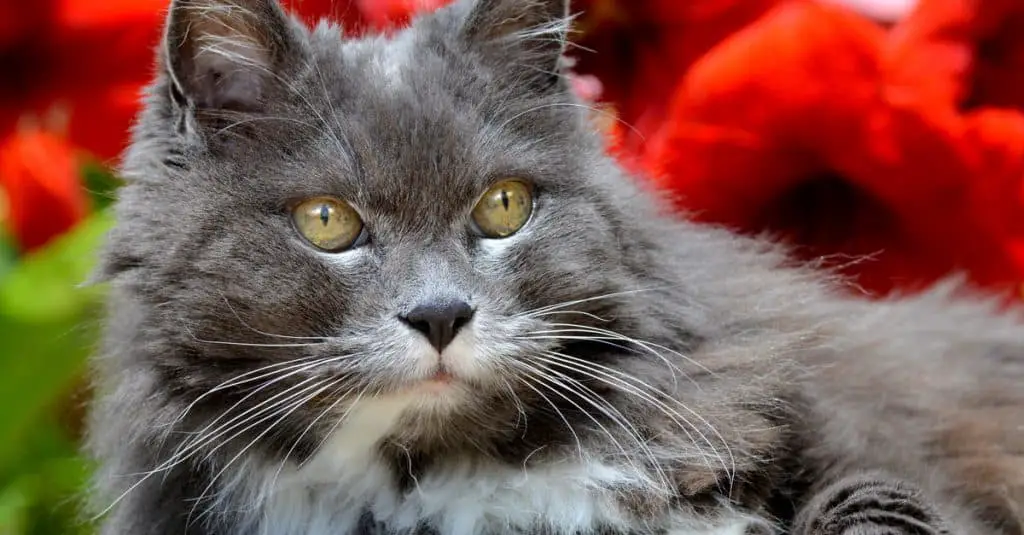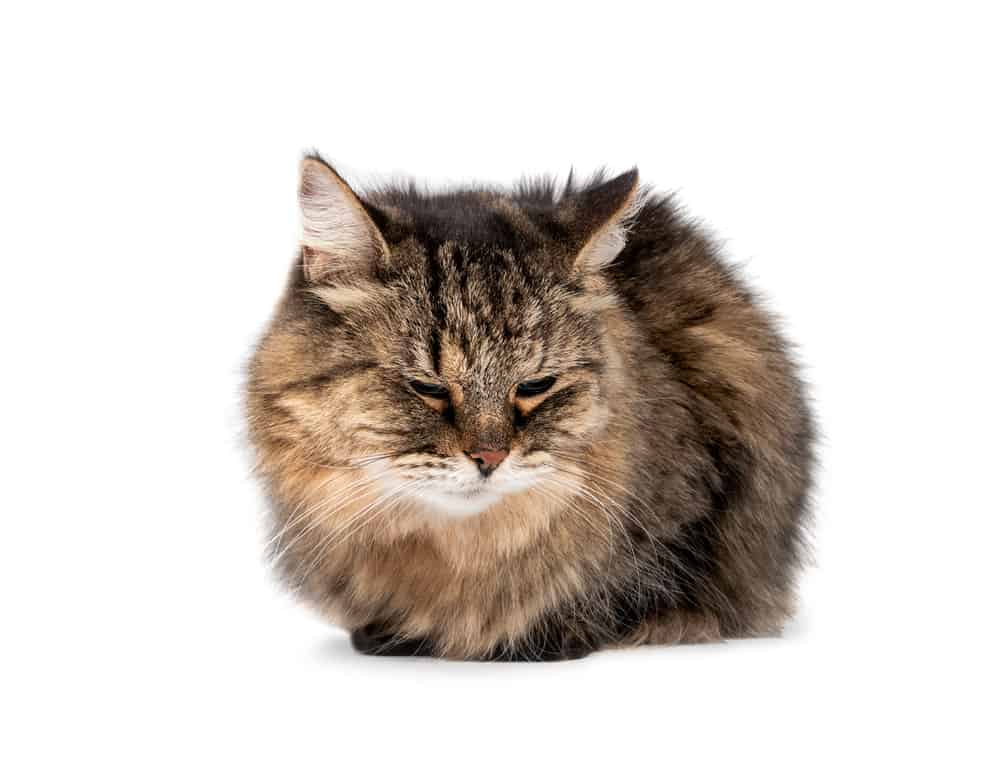When it comes to cat discipline, many owners instinctively reach for the nearest spray bottle, having been told this is an effective deterrent for unwanted behaviors. However, the truth is not as straightforward as it seems. In this article, we explain why the iconic spray bottle might be doing more harm than good and explore better ways to guide your feline friend.

The Problem with Using a Spray Bottle on Your Cat
Using a spray bottle as a disciplinary tool for cats is a common practice, stemming from the belief that it is a harmless way to deter unwanted behavior. The method involves spraying water at the cat when they exhibit behaviors their owners want to discourage, such as scratching furniture or jumping on countertops. Advocates of this technique argue that it’s a quick, effective, and non-invasive way to correct behavior without causing harm or distress to the animal. Yet, this perspective overlooks the potential negative impact on the cat’s well-being and the owner-pet relationship.
The Negative Impact of Spraying Water on Your Cat
Spraying water to discipline your cat can unintentionally lead to a host of behavioral and emotional issues, undermining the trust and bond between you and your pet.
Stress and anxiety
Spraying your cat with water can inadvertently lead to heightened levels of stress and anxiety. Cats are creatures of comfort and routine, and the unexpected nature of being sprayed can create a sense of unpredictability in their environment. This unpredictability can lead to chronic stress, as the cat may constantly be on edge, anticipating another unpleasant spray of water. Over time, this anxiety can manifest in more problematic behaviors or even health issues such as overgrooming or reduced appetite, as the cat tries to cope with the stress.
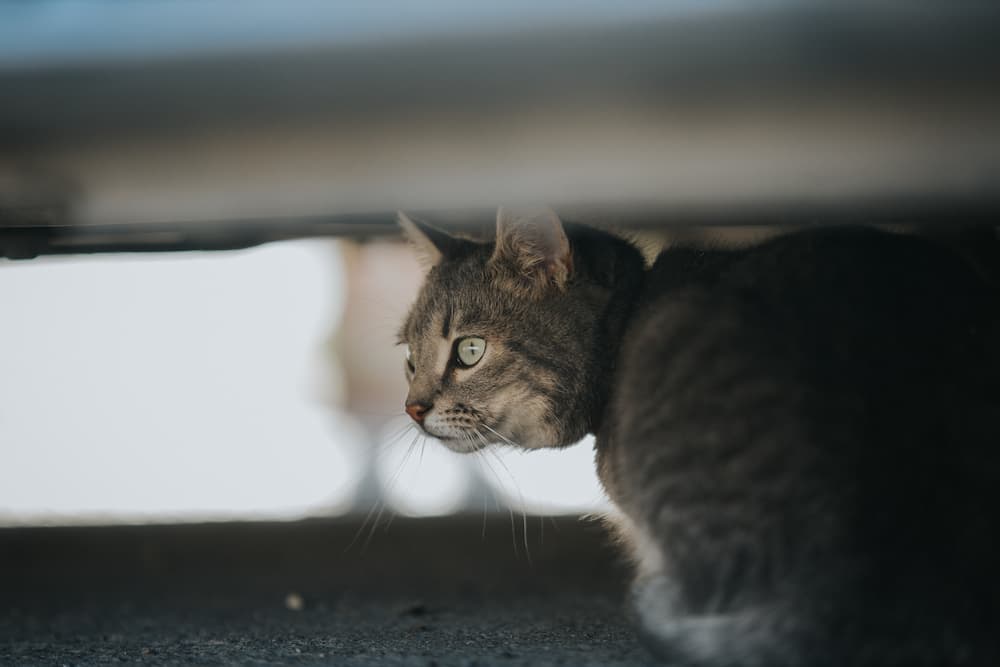
Trust issues between cat and owner
Using a spray bottle as a discipline method can severely damage the trust that is a foundation for a strong cat-human bond. Trust is built on consistency and understanding, qualities undermined by the unpredictable and frightening experience of being sprayed. A cat might start to associate their owner with negative experiences, leading to a breakdown in the bond. They may become more skittish, hide more often, or exhibit signs of fear around the owner, behaviors that are direct consequences of lost trust.
Potential for increased aggression or fear
Spraying a cat as a form of discipline can also inadvertently foster aggressive behaviors, such as biting and scratching, as a means for the cat to defend itself. When confronted with the startling experience of being sprayed, a cat’s natural instinct may be to protect itself from what it perceives as a threat. This defensive stance can escalate into more aggressive interactions with humans, as the cat begins to associate the person with fear and discomfort, leading to a cycle of fearfulness and aggression that is difficult to break.
Fear of water
Another significant consequence of using a spray bottle for cat discipline is instilling a fear of water. While cats are generally averse to water, associating it with punishment can exacerbate this reluctance, turning it into a profound phobia. This fear can extend beyond the mere act of being sprayed; it can make routine care, such as baths or necessary water exposure for medical treatments, extremely stressful and challenging. The cat’s aversion to water, now linked to negative memories of discipline, undermines their ability to remain calm during essential grooming or veterinary procedures, affecting their overall quality of life.
Understanding Cat Behavior
To effectively guide and care for a cat, it’s important to appreciate their natural instincts and the behaviors that drive them. Many actions perceived by owners as problematic, such as scratching furniture or jumping onto high surfaces, are deeply rooted in a cat’s instinctual needs.
Scratching, for example, is not merely a leisure activity; it is a vital behavior for maintaining claw health, stretching muscles, and marking territory through both the visible marks left and the scents released from their paws.
Similarly, cats instinctively seek high vantage points as a means to survey their surroundings and ensure their safety, a behavior stemming from their ancestors who needed to avoid ground-level threats. Recognizing these behaviors as natural can help owners find more constructive and positive ways to address them, rather than punishing the cat for doing what comes naturally.
The limitations of punishment-based training methods for cats
Punishment-based training methods, such as using a spray bottle (or worse, like spanking), are generally ineffective with cats because they fail to address the underlying reasons for the behavior or teach the cat what behavior is desired instead. Cats do not understand punishment as a corrective tool; rather, they are likely to feel confused and anxious when punished, which can exacerbate undesired behaviors rather than eliminate them.
This approach does not communicate to the cat what it should do in place of the unwanted behavior, leading to a communication breakdown between the cat and owner. Positive reinforcement techniques, which reward desired behavior, are far more effective because they help the cat associate good behaviors with positive outcomes, thereby encouraging repetition of those behaviors.
So, while punishment might momentarily stop an unwanted action, it does not guide the cat toward what they should do, creating a learning gap and potential for misbehavior to continue or surface in other forms.
Positive Reinforcement Training for Cats
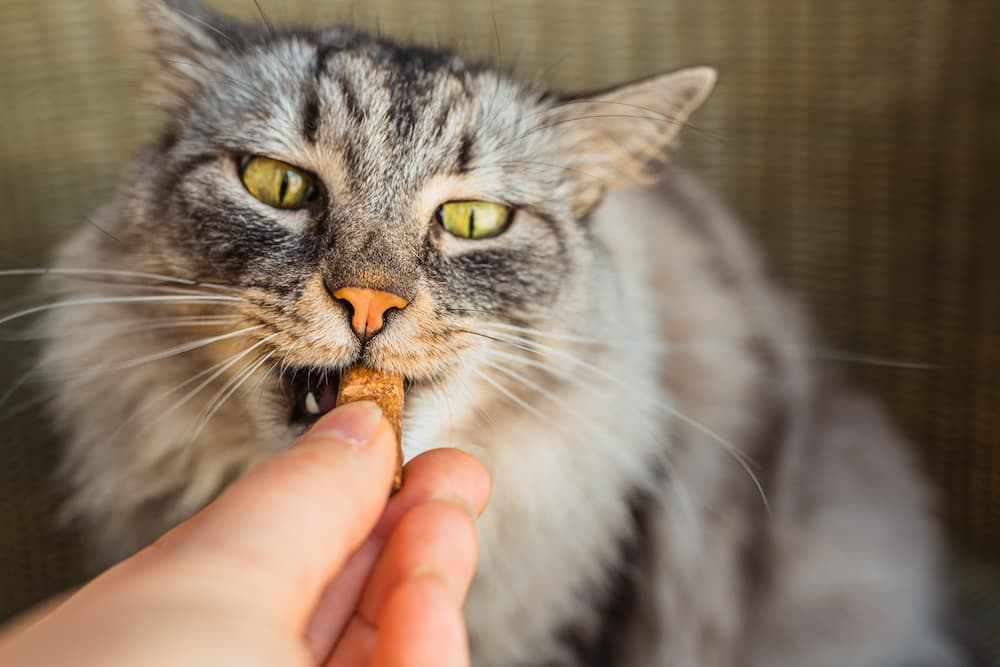
Positive reinforcement rewards desired behaviors, encouraging cats to repeat them. This methodology hinges on the principle of rewarding a cat immediately after they perform a desired behavior, thereby reinforcing the action as positive and desired. Whether it’s a treat, verbal praise, or physical affection, the reward makes the behavior more likely to be repeated in the future.
Unlike spraying a cat with water or some other form of punishment, which can foster fear and confusion, positive reinforcement builds a bond of trust and communication between cats and their owners. It shifts the focus from penalizing unwanted behaviors to promoting and reinforcing those behaviors that are wanted, creating a more harmonious and understanding relationship between pet and pet owner. Through consistent application of positive reinforcement, cats can learn to associate good behaviors with beneficial outcomes, significantly improving their capacity to adapt and thrive within the rules of their human companions’ environments.
Examples of using positive reinforcement to change unwanted behaviors
Using positive reinforcement to keep your cat off the counter
To keep a cat off the counter, positive reinforcement can be utilized by providing an appealing alternative space for the cat to occupy. For example, setting up a cat tree or a dedicated shelf near the kitchen area that offers a better vantage point or resting place than the counter. Every time the cat chooses this designated spot over the counter, promptly reward them with a treat, praise, or affection. Using clicker training can also be effective; click at the exact moment the cat opts for the alternative space, followed by a reward. This method helps the cat understand that staying off the counter yields positive outcomes.
When your cat does get on the counter, avoid punishing them and instead redirect their behavior by tossing a toy on the floor or leading them to the designated spot where they can receive their reward. Over time, with consistent reinforcement, the cat will learn that staying off the counter results in good things while jumping up leads to no reward.
Using positive reinforcement to teach your cat to stop scratching the furniture
When addressing the issue of a cat scratching the couch, positive reinforcement involves providing suitable scratching alternatives such as scratching posts or pads made of materials that cats find irresistible, like sisal, cardboard, or carpet. Place these near the couch or the cat’s favorite scratching areas. Each time the cat uses the scratching post instead of the couch, immediately reward them with their favorite treats, playtime, or affectionate petting. Incorporating catnip or pheromone sprays on the scratching post can make it more enticing. Consistently rewarding the use of these alternatives teaches the cat that scratching the post is a behavior that results in positive reinforcement.
If your cat does scratch the furniture, avoid punishing them and instead redirect their behavior to the designated scratching post. With patience and consistency, the cat will learn that scratching the furniture does not yield positive outcomes while using the designated scratching post does.
Alternatives to Spraying Your Cat with Water
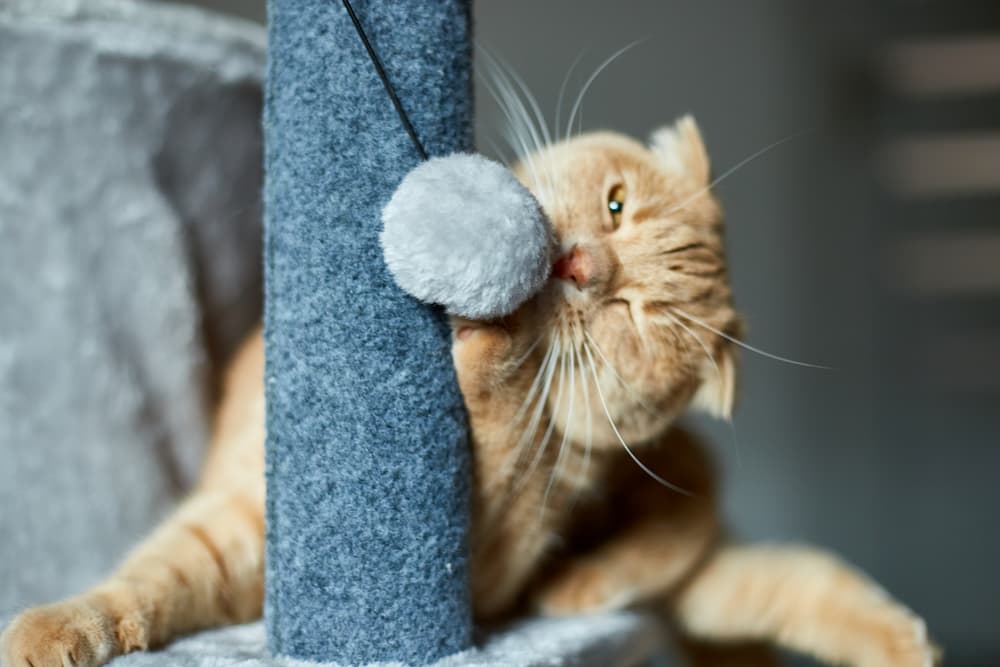
Environmental enrichment
This is a compassionate and effective strategy for managing cat behaviors that can otherwise be deemed problematic. By providing your cat with scratching posts, designated play areas, and comfortable perches, you cater to their natural instincts for scratching, playing, and observing their environment from a safe vantage point. This approach not only prevents unwanted behaviors like furniture scratching but also enhances your cat’s overall well-being and happiness by keeping them engaged and satisfied.
Redirecting unwanted behaviors
Redirection is another gentle method to discourage certain actions without the use of punishment. When your cat engages in behavior you want to change, such as jumping on the counter, you can redirect their attention to a more appropriate activity, like playing with a toy or resting in their own bed. This strategy focuses on providing an immediate alternative that satisfies the cat’s initial impulse in a way that is acceptable to their human companions, encouraging a peaceful coexistence.
Training with positive reinforcement
As we mentioned previously, this is about rewarding the behaviors you wish to encourage in your cat. This method uses treats, affection, and praise as incentives for good behavior, and is particularly effective because it helps your cat associate these desired behaviors with positive outcomes. This approach not only fosters a stronger, more positive relationship between you and your cat but also promotes a learning environment where your cat is motivated to behave in ways that are rewarded, thus naturally diminishing the occurrence of unwanted behaviors.
Final Thoughts about Using Spray Bottles with Cats
Patience, consistency, and understanding your cat’s unique personality are key to successfully implementing any behavior modification strategy. By using positive reinforcement and avoiding punishment, you can encourage desired behaviors in your cat and foster a closer connection between you both. With time, patience, and love, you can help shape your cat’s behavior in a way that promotes harmony and happiness in your home.
So the next time you consider spraying your cat with water or using other forms of punishment, remember that there are gentle and effective alternatives that can bring about positive change in your feline friend. Let’s choose kindness and understanding over fear and force when it comes to our beloved pets.
The Catington Post is reader-supported. That means, if you make a purchase through links on our site, we may earn an affiliate commission. All images and names which are not the property of The Catington Post are the property of their respective owners.



